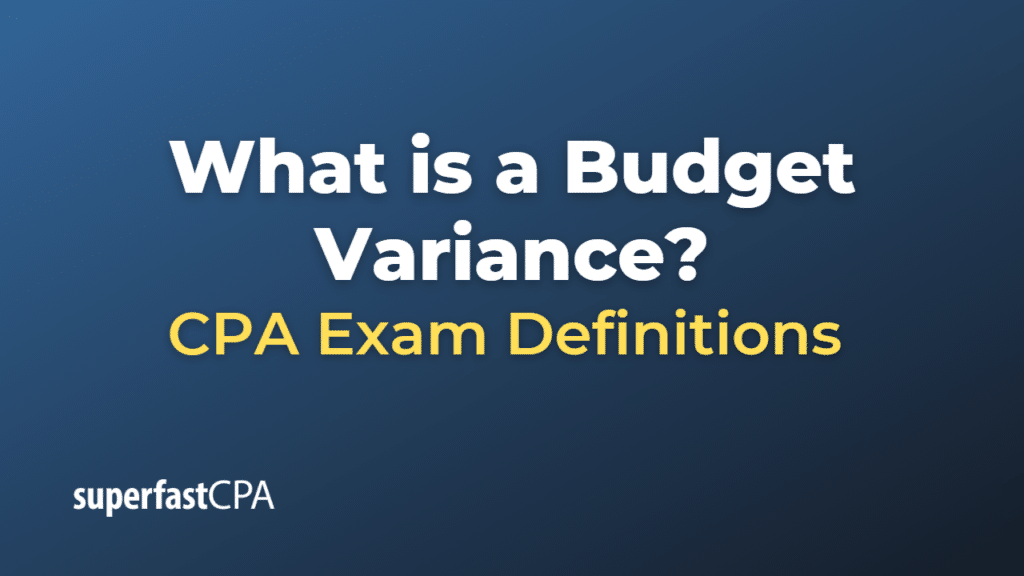Budget Variance
A budget variance is the difference between the budgeted or planned amount and the actual amount for a specific financial category, such as revenue or expense, during a given period. Budget variances are used to analyze an organization’s financial performance and determine how well it is adhering to its financial plan.
A budget variance can be either favorable or unfavorable:
- Favorable Variance: This occurs when the actual financial outcome is better than the budgeted amount. For example, if the actual revenue is higher than the budgeted revenue, or if the actual expenses are lower than the budgeted expenses, the variances are considered favorable.
- Unfavorable Variance: This occurs when the actual financial outcome is worse than the budgeted amount. For example, if the actual revenue is lower than the budgeted revenue, or if the actual expenses are higher than the budgeted expenses, the variances are considered unfavorable.
Regularly monitoring budget variances helps organizations identify areas where they are performing better or worse than expected, enabling them to make adjustments to their budgets or operations accordingly. Understanding the reasons behind significant variances, such as changes in market conditions, operational inefficiencies, or shifts in organizational strategy, can provide valuable insights for decision-makers and contribute to more effective financial planning and management.
Example of a Budget Variance
Let’s look at an example of budget variances for a small tech company’s marketing department for a given month.
| Category | Budgeted | Actual | Variance | Variance % |
|---|---|---|---|---|
| Revenues | ||||
| Product Sales | 40,000 | 45,000 | 5,000 | 12.5% |
| Expenses | ||||
| Ad Campaigns | 15,000 | 12,000 | 3,000 | 20% |
| Content Creation | 5,000 | 6,000 | (1,000) | -20% |
| Social Media Ads | 2,000 | 2,500 | (500) | -25% |
| Trade Shows | 3,000 | 1,500 | 1,500 | 50% |
| Net Income | 15,000 | 23,000 | 8,000 | 53.3% |
In this example, the company’s product sales for the month were $45,000, which is $5,000 (12.5%) higher than the budgeted amount of $40,000. This is a favorable variance.
In terms of expenses, ad campaigns cost the company $12,000, which is $3,000 (20%) less than the budgeted amount of $15,000, resulting in a favorable variance. Content creation expenses were $6,000, which is $1,000 (20%) more than the budgeted amount of $5,000, resulting in an unfavorable variance. Social media ads cost $2,500, which is $500 (25%) more than the budgeted amount of $2,000, also an unfavorable variance. Trade show expenses were $1,500, which is $1,500 (50%) less than the budgeted amount of $3,000, resulting in a favorable variance.
Overall, the net income for the marketing department was $23,000, which is $8,000 (53.3%) higher than the budgeted net income of $15,000. The favorable variances in product sales and some expense categories contributed to this increase in net income.
In this example, the marketing department exceeded its revenue target and spent less in some areas than anticipated, resulting in a higher net income than planned. The company should analyze the reasons for these variances and use this information to make better-informed decisions and improve future budget planning.













